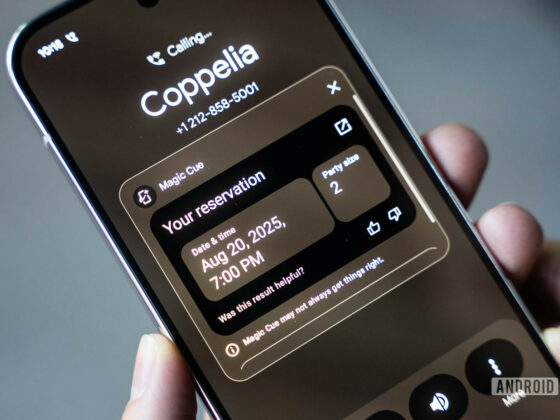Brian Chesky, CEO of Airbnb shares 10 lessons of designing a global company.
👋 Hello! Welcome to this week’s ADPList Newsletter, a weekly advice column. Each Tuesday, we tackle design, building products, and accelerating careers. We’re looking for sponsors. If you’re interested to support our newsletter to advertise, let’s chat here.
Hi fellow readers!
First, I want to address the elephant in the room 🐘 — 54%~ of you gave me a good FOMO for missing out on #Config2023; I hope you enjoyed yourselves in person or virtually. Where was I? Well, I was serving in the army in Singapore (an annual exercise training). A different type of fun for a founder/designer if you ask me.
This week, I want to talk about Brian Chesky. He’s the Co-Founder, and CEO of Airbnb; he also is a designer, who graduated from RISD. One thing that still surprises me is that Brian is the only Designer-CEO in the entire Fortune 500 Companies CEO.
“Why does design need to be in board room when it can occassionally run the board room?” — Brian Chesky.
Brian Chesky spoke at Config 2023 on what it means to be a design-led company. In 2008, when Airbnb was founded, it was crazy to see designers being founders. Today, Airbnb is breaking the home-sharing industry by designing trust for 150 Million strangers.
How Airbnb is led by design (and why its genius) — Brian Chesky, CEO of Airbnb
Lesson 1: The Nerve to be Design-Led.
“Design, in some ways, is fragile. Because companies are organized around the scientific method, and the creative process is something that requires nerve. And over the years, I started losing my nerve.
I brought in a lot of different people from a lot of different companies and they brought their way of working to us. […] We had 10 different divisions, they had 10 different subdivisions, we were very much run by product managers, we had a plethora of A/B experiments, and the thing I started noticing is the more people we added, the more projects we pursued, the less our app changed and the more the costs went up.”
Lesson 2: Learning from how Apple is run.
“I had forgotten about the magic of the design renaissance that Steve Jobs had [at Apple]. And [Jony Ive and Hiroki Asai] described this company to me and the way of running a company with design at the center. It was a totally different way of running a company than everything I was taught.
Everything I was taught about how you run a company was the opposite of what Steve Jobs and Jony Ive and Hiroki Asai did at Apple. And now I have this idea—there’s maybe a better way to run a company. […] I realized that, for 10 years, I was apologizing for how I wanted to run the company.
Because how I really wanted to run the company was as a designer, but I just didn’t have the nerve.”
Lesson 3: Get your core service right.
“We can’t do new things unless we have permission. And we don’t have permission to work on new things until people love our core service.
If they’re complaining on social media and they’re calling customer service, they don’t love our core service so we need to get our house in order first.”
Lesson 4: Rethinking Airbnb’s approach to roadmaps.
“I asked every leader ‘Show me your roadmap.’ They couldn’t even figure out their roadmaps because everyone had a sub-roadmap on sub-teams, and those teams had roadmaps. And so I said ‘There’s a simple rule. If it’s not on the roadmap, it can’t ship. And it must be on one roadmap.’
So we [did] this giant exercise and we put everything single thing on one roadmap. Then I said ‘We can only do 10% of the things on the roadmap.’ That was a reckoning. So I said ‘We’re only going to do a few really big things.’ We took the very best people [and] we put them all on a few projects.”
Lesson 5: Issues with A/B Testing
“A/B testing is abdicating your responsibility to the users. If you *are* going to do an A/B test, it should be hypothesis-driven. If it works, you should be able to say why, not just what.”
Lesson 6: Improving product quality at Airbnb
“We [decided] to focus, number one, on shipping things that you’re proud of. If you don’t want to put your name on it, you don’t ship it.
The artist in you should first and foremost make something for yourself. When you love it and you’re proud of it, now you’re ready to put it out to somebody else.
There has to be a sense of craft—obsessing over every single detail.”
Lesson 7: Empowering designers
“The designers are equal to the product managers. Actually, we got rid of the classic product management function. Apple didn’t have it either. We combined product management with product marketing, and we said that you can’t develop products unless you know how to talk about the products. We made the team much smaller [and] we elevated design. […] We thought of designers very much as architects.”
“Product managers are critical, but they shouldn’t be doing the job of a designer.”
“There’s a whole new generation of designers that aren’t just going to work for engineers; they’re going to sit alongside engineers. They’re not just going to be told what to do by product managers; they’re going to be helping drive the product. And some of them are going to choose to drive companies because, ultimately, what everyone wants is to have a product that people love.”
Lesson 8: Airbnb’s product release cycle
“We started doing these release cycles where we’ll ship 80% of the products twice a year during these releases. To be clear, we *do* do optimizations—we do ship code every single hour of every single day—but that’s a budget. That’s about 20%.”
Lesson 9: Leadership involvement in product reviews
“I started reviewing all the work. I reviewed the work every week, every two weeks, every four weeks. Before, people thought that was meddling. And I said ‘You know what, screw it.
We’re going to review everything, I’m going to be the chief editor, and I didn’t push decision-making down. I decided to pull decision-making in like an orchestra conductor and what we created was a shared conscious of the top 30 to 40 people at the company, and it was like one neural network—one brain.”
Lesson 10: Drawback on Design System
“I love design language systems, but the problem with design language systems is that you should design whatever you want and then you put it in the design language system. If you can only pull from this system, you’re never going to be able to take a giant leap if it breaks the system.”
Lesson 11: Importance of product marketing
“A lot of products fail because they’re not well-marketed. If you ship a feature and no-one knows, did it really matter? So a lot of times people give up on features too soon. They ship something, the data says it doesn’t work, they kill the feature.
Well, did you tell people about it? Do they know about it?”
Credits to Max Wendkos for summarizing on Twitter! I hope you find inspiring from this week’s post 🙏. Good luck! Got any questions/other strategies you want to share with the community? Let’s help!
📺 Watch the full video here
🎟️ Subscriber Exclusive: ADPList AI Course is now live — register at $30 today 🔮!
This course provides comprehensive insights into leveraging AI in product management. Gain a deep understanding of how AI can optimize your product development process, improve decision-making, and enhance user experiences.
Gain hands-on experience with a range of AI tools tailored for product management tasks.
ADPList gives every person the freedom to grow together – by opening doors to mentors worldwide. Join over 195K+ learners and meet your mentor today. We’re on a mission to give the world the freedom to grow together.
If you find this post valuable, check out our other posts:
If you find this newsletter valuable, share it with a friend, and consider subscribing if you haven’t already.










